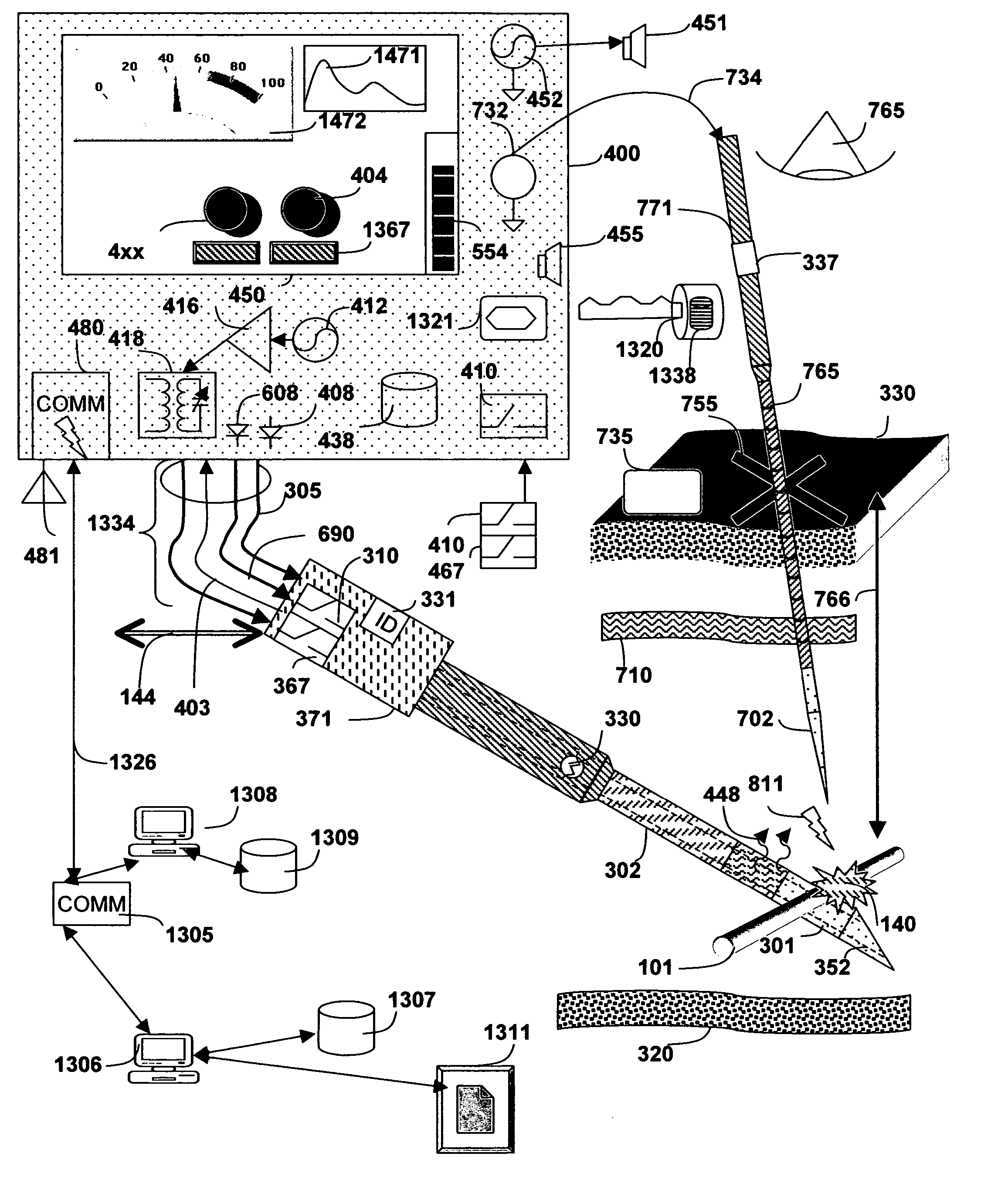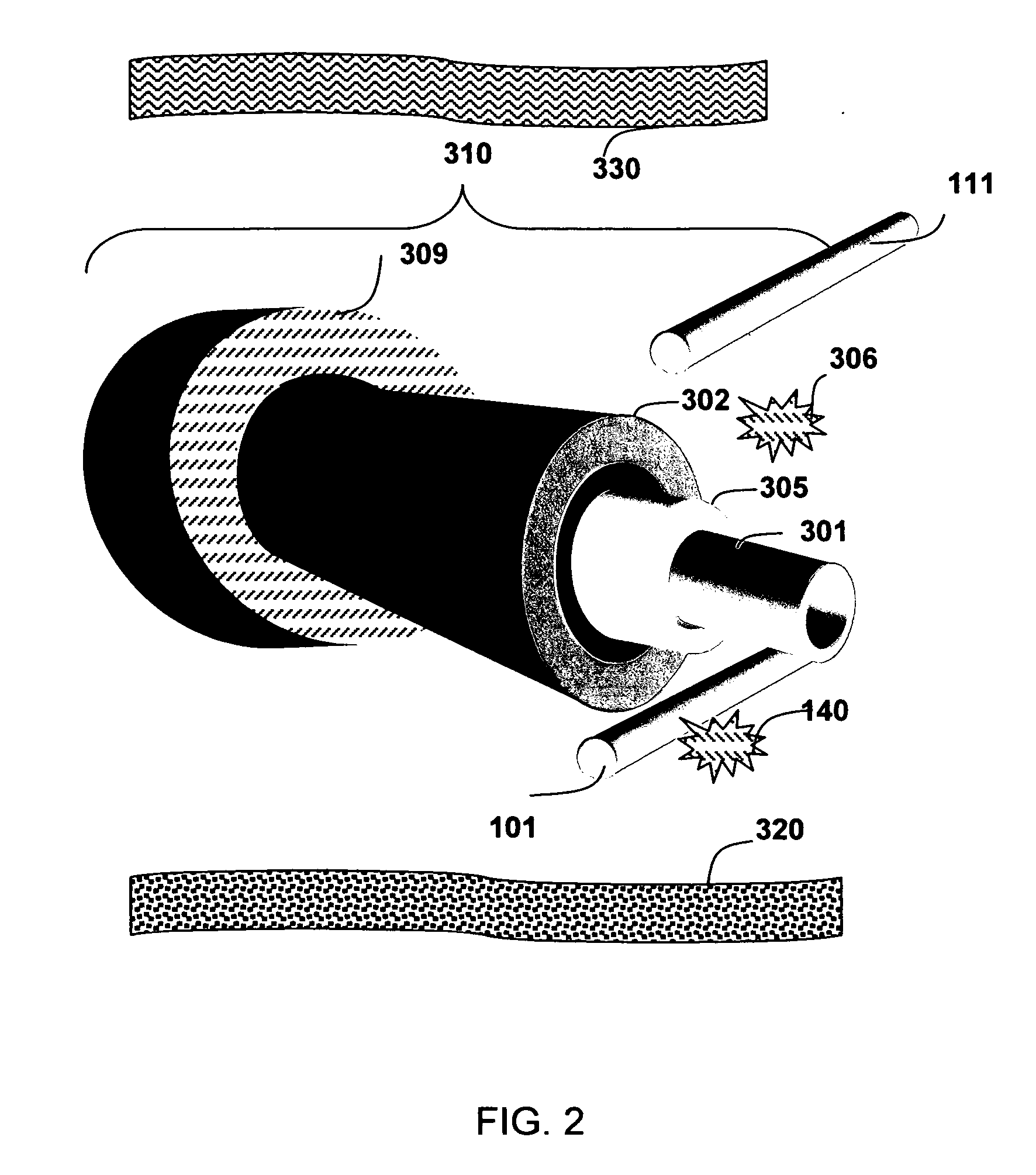Ablation apparatus and system to limit nerve conduction
a technology of nerve conduction and ablation apparatus, which is applied in the field of minimally invasive surgery, can solve the problems of affecting the recovery of patients, and generating abnormal signals, etc., and achieves the effects of reducing the chance of patient cross contamination, reducing patient recovery time, and reducing the risk of infection
- Summary
- Abstract
- Description
- Claims
- Application Information
AI Technical Summary
Benefits of technology
Problems solved by technology
Method used
Image
Examples
Embodiment Construction
[0110] This section provides information on the overall operation of this system. FIG. 1 has two main components and one optional component, which are the energy generator 400, the probe 371 (alternate probes are described in FIGS. 3A-D) and optionally probes 771 or 772 that may be used.
[0111] In normal operation, the novel probe 371 would combine a unique bipolar configuration in a single MIS needle, is inserted into the patient using MIS techniques. The probe, which may contain and / or convey various functions described later, is initially guided anatomically to the region of the anticipated or desired location. Various means of locating the tip 301 are utilized of placing the zone of ablation in the proper area to interrupt signal flows through the nerve 101.
DETAILED DESCRIPTION OF DEVICE OPERATION
[0112] This section refers to the drawings to describe use of the probe. There are many combinations of electrode diameters and tip shapes are possible. The ‘novel’ probe performs a v...
PUM
 Login to View More
Login to View More Abstract
Description
Claims
Application Information
 Login to View More
Login to View More - R&D
- Intellectual Property
- Life Sciences
- Materials
- Tech Scout
- Unparalleled Data Quality
- Higher Quality Content
- 60% Fewer Hallucinations
Browse by: Latest US Patents, China's latest patents, Technical Efficacy Thesaurus, Application Domain, Technology Topic, Popular Technical Reports.
© 2025 PatSnap. All rights reserved.Legal|Privacy policy|Modern Slavery Act Transparency Statement|Sitemap|About US| Contact US: help@patsnap.com



